#Sir Henry Marten
Explore tagged Tumblr posts
Text
Inside William’s Next Act: Tatler’s May issue goes behind the scenes as the Prince of Wales is rising above the noise — and playing the long game
The burden of leadership is falling upon Prince William, but as former BBC Royal Correspondent, Wesley Kerr OBE, explains in Tatler’s May cover story, the future king is taking charge
By Wesley Kerr OBE
21 March 2024
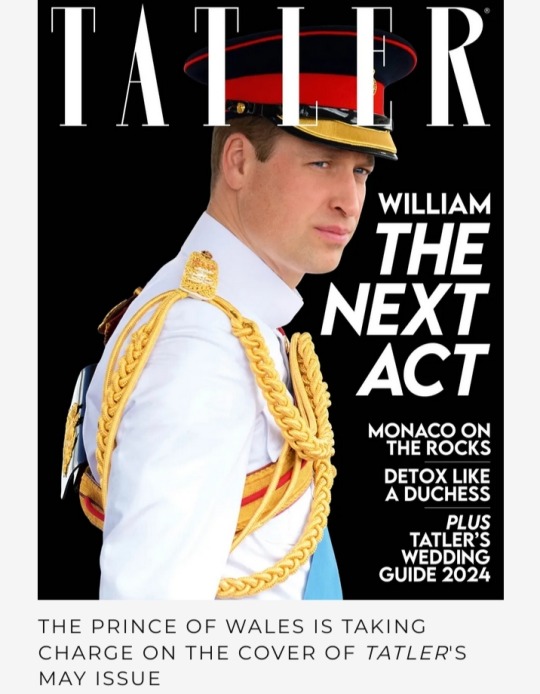
When I first met Prince William in 2009, he asked me if I could tell him how he could win the National Lottery.
It was a jokey quip from someone who has since become the Prince of Wales, the holder of three dukedoms, three earldoms, two baronies and two knighthoods, and heir to the most prestigious throne on earth.
He was, of course, being relatable; I was representing the organisation that had allocated Lottery funding towards the Whitechapel Gallery and he wanted to put me at ease.
William is grand but different, royal but real.
At 6ft 3in, he has the bearing and looks great in uniform after a distinguished, gallant military career.
He will be one of the tallest of Britain’s kings since Edward Longshanks in the 14th century and should one day be crowned sitting above the Stone of Scone that Edward ‘borrowed.’
William, by contrast, has a deep affinity with Scotland and Wales, having lived in both nations and gained solace from the Scottish landscape after his mother died.
He’s popular in America and understands that the Crown’s relationship to the Commonwealth must evolve.
The Prince of Wales has long believed that ‘the Royal Family has to modernise and develop as it goes along, and it has to stay relevant’, as he once said in an interview.
He seeks his own way of being relatable, of benefitting everybody, in the context of an ancient institution undergoing significant challenge and upheaval, as the head of a nation divided by hard times, conflicts abroad, and social and political uncertainty.
We might recognise Shakespeare’s powerful line spoken by Claudius in Hamlet: ‘When sorrows come, they come not single spies, but in battalions.’
With the triple announcement in January and February of the Princess of Wales’s abdominal surgery and long convalescence, of King Charles’s prostate procedure and then of his cancer diagnosis, the burden of leadership has fallen on 76-year-old Queen Camilla and, crucially, on William.
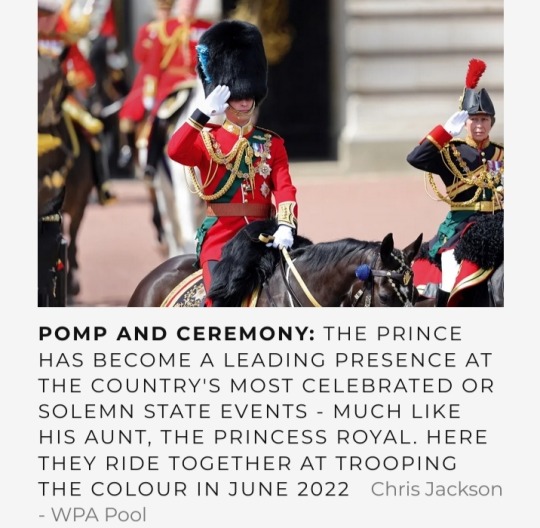
The Prince of Wales’s time has come to step up; and so he has deftly done.
In recent months, we have seen a fully-fledged deputy head of state putting into practice his long-held ideas, speaking out on the most contentious issue of the day and taking direct action on homelessness.
Last June, he unveiled the multi-agency Homewards initiative with the huge aspiration of ending homelessness, backed with £3 million from his Foundation to spearhead action across the UK.
He is consolidating Heads Together, the long-standing campaign on mental health, and fundraises for charities like London’s Air Ambulance Charity.
He was, of course, once a pilot for the East Anglian Air Ambulance services – a profession that had its downside: seeing people in extremis or at death’s door, he found himself ‘taking home people’s trauma, people’s sadness.’
Tom Cruise was a guest at the recent London’s Air Ambulance Charity fundraiser, William’s first gala event after Kate’s operation.
And more stardust followed when William showed that, even without his wife by his side, he could outclass any movie star at the Baftas.
There’s also his immense aim of helping to ‘repair the planet’ itself with his Earthshot Prize: five annual awards of £1 million for transformative environmental projects with worldwide application.
This project has a laser focus on biodiversity, better air quality, cleaner seas, reducing waste and combating climate change. Similar aims to his father; different means to achieve the goal.
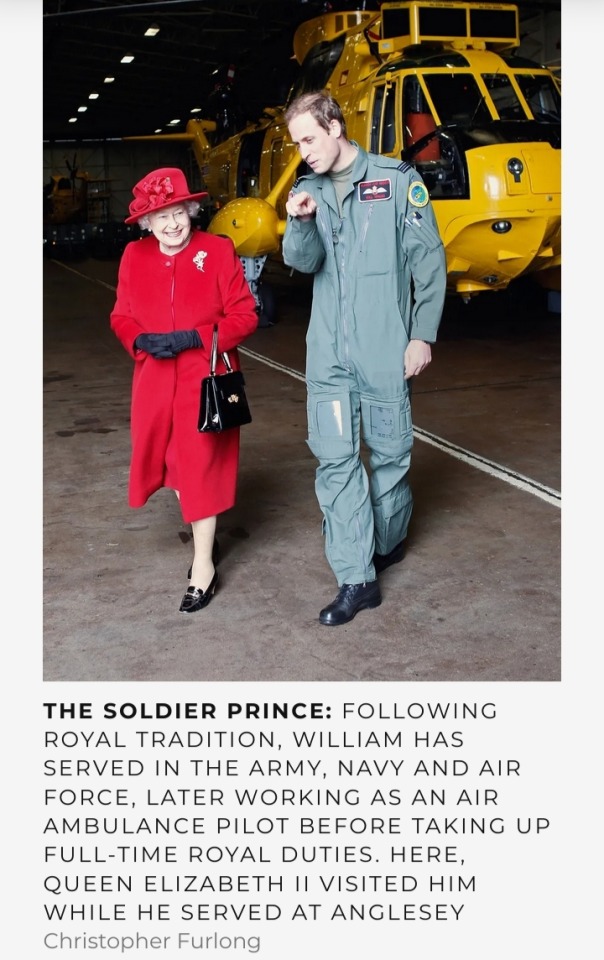
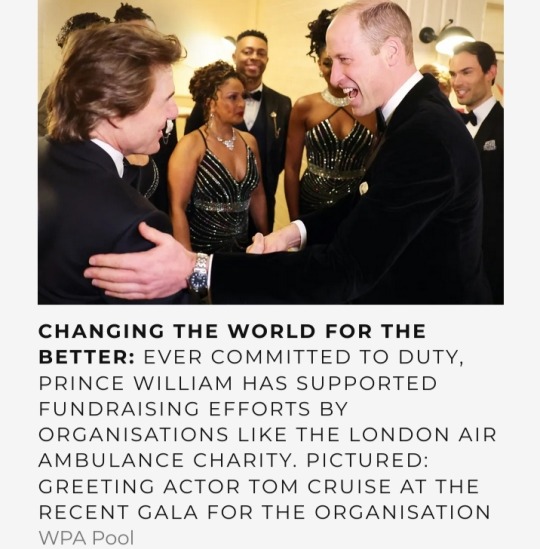
On the issue which has caused huge convulsions – the Middle East conflict – William’s 20 February statement from Kensington Palace grabbed attention.
He said he was ‘deeply concerned about the terrible human cost of the conflict since the Hamas terrorist attack on 7 October. Too many have been killed.’
There were criticisms – along the lines of ‘the late Queen would have never spoken out like this’ or ‘what right does he have to meddle in politics?’ – but it was hard to disagree with his carefully calibrated words.
His call for peace, the ‘desperate need’ for humanitarian aid, the return of the hostages.
The statement was approved by His Majesty’s Government, likely cleared with the King himself at Sandringham the previous weekend and also backed by the chief rabbi of Great Britain, Sir Ephraim Mirvis.
Indeed, William and Catherine had immediately spoken out on the horrors of 7 October.
William followed up the week after his Kensington Palace statement by visiting a synagogue and sending a ‘powerful message’, according to the chief rabbi, by meeting a Holocaust survivor and condemning anti-Semitism.
This is rooted in deep personal conviction following William’s 2018 visit to Israel and the West Bank, says Valentine Low, the distinguished author of Courtiers and The Times’s royal correspondent of 15 years, who was on that 2018 trip.
‘William was so moved by his visit to Israel and the West Bank, he found it very affecting, and he was not going to drop this issue – he was going to pay attention to it for the rest of his life,’ says Low.
‘He must feel that… not to say something on the most important issue in the world [at that moment] would be a bit odd if you feel so strongly about it.’
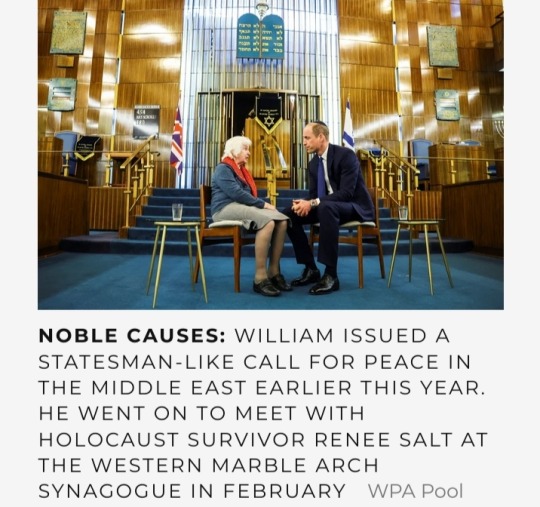
There was concern from some commentators about politicising the monarchy, but this rose above the particulars of party politics.
As Prince of Wales, like his father before him, there is perhaps space to speak out sparingly on carefully chosen issues.
On this occasion, his views were in line with majority public opinion.
On homelessness, news came that same week that William was planning to build 24 homes for the homeless on his Duchy of Cornwall estate.
‘William’s impact is very personal,’ says Mick Clarke, chief executive of The Passage, a charity providing emergency accommodation for London’s homeless.
‘Two weeks before Christmas, the prince came to our Resource Centre in Victoria for a Christmas lunch for 150 people.
He was scheduled to stay for an hour, to help serve, wash up, and talk to people.
He ended up staying for two and a quarter hours, during which time he went from table to table and spoke to every single person.’
Clarke continues:
‘William has an ability to listen, talk and to put people at ease. During the November 2020 lockdown, he came on three separate occasions to help.
It gave the team a boost that he took the time; it was his way of saying: “I support you; you’re doing a great job.”’
Seyi Obakin, chief executive of Centrepoint, one of the prince’s best-known causes, adds:
‘People associate his patronage with the big moments like the time he and I slept under Blackfriars Bridge.
The things that stick with me are smaller in scale and the more profound for it – in quieter moments, away from the cameras, where he has volunteered his time.’
It is a different approach from the King’s.
As Prince of Wales, he was involved in the minutiae of dozens of issues at any one time, working into the night to follow up on emails, crafting his speeches, writing or dictating notes.
Add to that much nationwide touring over 40 years (after he left active military service in 1976), fitting in multiple engagements, often being greeted formally by lord lieutenants.
This is not William’s style. He has commended his father’s model, but he does things his own way.
Although patronages are under review, William has up till now far fewer than either his father or his grandparents.
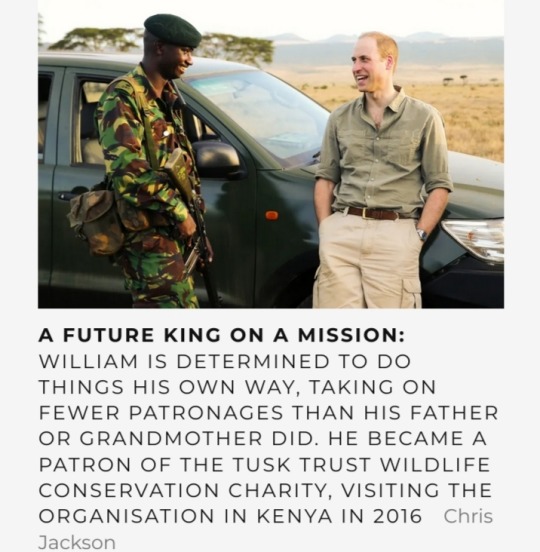
Charles is sympathetic to William’s approach and his desire to make time with his young family sacrosanct.
They are confidantes, attested by the night of Queen Elizabeth’s death.
They were both at Birkhall with Camilla, reviewing funeral arrangements while the rest of the grieving family were nearby at Balmoral, hosted by the Princess Royal.
Charles has had almost six decades in public life and is the senior statesman of our time, with even longer in the spotlight than Joe Biden.
After Eton and St Andrew’s University, where he met Catherine, William served in three branches of the military between 2006 and 2013, finishing as a seasoned and skilled helicopter rescue pilot.
His later employment as an air ambulance pilot stopped in 2017, when he became a full-time working royal.
At that time, not so long ago – with Harry unmarried, Andrew undisgraced, and Philip and Elizabeth still active – William shared the spotlight.
Now, after the King, he’s the key man.
He can look back on the success of his first big campaign initially launched with his wife and brother in 2016: Heads Together.
‘We are delighted that Prince William should have become such a positive and sympathetic advocate for mental health through his Heads Together initiative and now well-established text service, Shout, among other projects,’ says the longtime CEO and founder of Sane, the remarkable Marjorie Wallace CBE.
‘It is not always known that he follows in the footsteps of his father, the King, whose inspiration and vision were vital in the creation of our mental health charity Sane.
As founding patron, he was instrumental in establishing our 365-days-a-year helpline and was a remarkable and selfless support to me in setting up the Prince of Wales International Centre for Sane Research.’
'Indeed,' says Wallace, 'this is where Prince William echoes the work of his father, showing the same ‘understanding and compassion for people struggling through dark and difficult times of their lives and has done much to raise awareness and encourage those affected to speak out and seek help.
We owe a huge debt to His Majesty and the Prince of Wales for their involvement in this still-neglected area.’
Just as I saw all those years ago at that early solo engagement in Whitechapel, William still approaches his public duties with humour and fun.
‘He defuses the formality with jocularity,’ says Valentine Low, citing two public events in 2023 that he witnessed.
In April last year, while on a visit to Birmingham, William randomly answered the phone in an Indian restaurant he was being shown around and took a table booking from a customer – an endearing act of spontaneity.
On his arrival later that day, the unsuspecting diner was surprised to be told exactly whom he had been talking to.

In October, Low reported, William ‘unleashed his inner flirt as he hugged his way through a visit with Caribbean elders [in Cardiff] to mark Black History Month.
As he gave one woman a hug – for longer than she expected – he joked: “I draw the line at kissing.”
And while posing for a group photograph, he prompted gales of laughter when he quipped: “Who is pinching my bottom?”’
Low believes that when William eventually becomes king, he will be more ‘radical’ than his father but wonders if people will respond to ‘call me William’ when ‘the whole point of the Royal Family is mystique and being different.’
However, William has thought deeply about his current role and is prepared for whatever his future holds.
For now, there is a decision to be made on Prince George’s secondary schooling. It’s said that five public schools are being considered, all fee-paying.
Eton is single-sex and boarding but close to home. Marlborough (Catherine’s alma mater) is co-ed and full boarding. And Oundle, St Edward’s Oxford and Bradfield College (close to Kate’s parents) are co-ed with a mix of boarding and day.
As parents, William and Catherine aspire to raise their children ‘as good people with the idea of service and duty to others as very important’, William said in an interview with the BBC in 2016.
‘Within our family unit, we are a normal family.’ Which may be one reason why he is so resistant to their privacy being compromised either by the media or close family members.
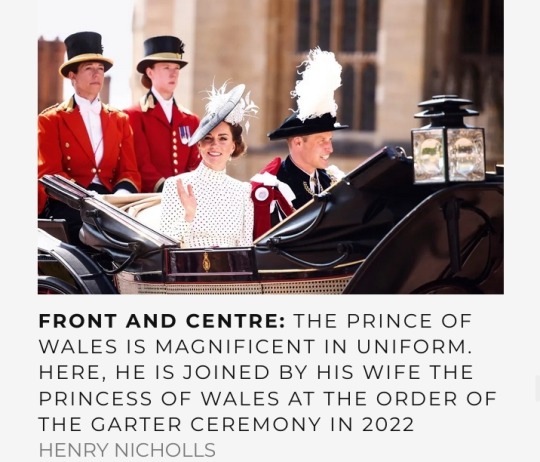
The 19th-century author Walter Bagehot wrote:
‘A family on the throne is an interesting idea also. It brings down the pride of sovereignty to the level of petty life… a princely marriage is the brilliant edition of a universal fact, and, as such, it rivets mankind.’
If hereditary monarchy is to survive, it must beguile us but also demonstrate its utility, that it is a force for good.
William said in that 2016 interview, ‘I’m going to get plenty of criticism over my lifetime,’ echoing Queen Elizabeth II’s famous Guildhall speech in 1992 ‘that criticism is good for people and institutions that are part of public life. No institution – city, monarchy, whatever – should expect to be free from the scrutiny of those who give it their loyalty and support, not to mention those who don’t.’
William saw close up his mother’s ability to bring public focus and her own personal magnetism to any subject or cause she focused on.
He admires his father’s work ethic, the way he ‘really digs down,’ sometimes literally (I understand that gardening is giving the King solace during his cancer treatment).
But the biggest influence for William was Her late Majesty, as he said on her 90th birthday.
As an Eton schoolboy, William made weekend visits to the big house on the hill, being mentored by Granny rather as she had been tutored in the Second World War by the then vice-provost of Eton, Sir Henry Marten.
William said in 2016:
‘In the Queen, I have an extraordinary example of somebody who’s done an enormous amount of good and she’s probably the best role model I could have.’
That said, his aim was ‘finding your own path but with very good examples and guidance around you to support you.'
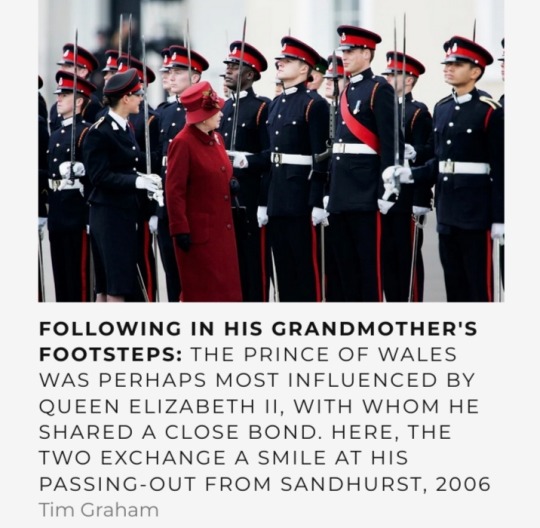
Queen Elizabeth II had a brilliant way of rising above the fray and usually being either a step ahead of public opinion or in tune with it.
If you are at the helm of affairs in a privileged hereditary position, your duty is to serve and use your pulpit for the benefit of others.
In a democracy, monarchy is accountable.
The scrutiny is intense, with an army of commentators paid for wisdom and hot air about each no-show, parsing each announcement, interpreting each image.
William takes the long view. He has ‘wide horizons,’ says Mick Clarke.
‘There are so many causes that are more palatable and easier to achieve than ending homelessness, but his commitment and drive are 100 per cent.’
The prince seeks a different way of being royal in an ancient institution that must move with the times. His task? To develop something modern in an ever-changing world.
He faces all sorts of new issues – or old issues in new guises.
Noises off from within the family don’t help – Andrew’s difficulties, or the suggestions of prejudice from Montecito a couple of years ago (now seemingly withdrawn), which prompted William’s most vehement soundbite: ‘We’re very much not a racist family.’
William is maybe a new kind of leader who can keep the monarchy relevant and resonant in the coming decades.
Queen Elizabeth II is a powerful exemplar and memory, but she was of her time. William is his own man.
He must overcome and think beyond ‘the unforgiving minute.’
Indeed, he could seek inspiration in Rudyard Kipling’s poem, If.
If you can force your heart and nerve and sinew
To serve your turn long after they are gone,
And so hold on when there is nothing in you
Except the Will which says to them: ‘Hold on!’
If you can talk with crowds and keep your virtue,
Or walk with Kings—nor lose the common touch[…]
Yours is the Earth and everything that’s in it,
And—which is more—you’ll be a Man, my son!
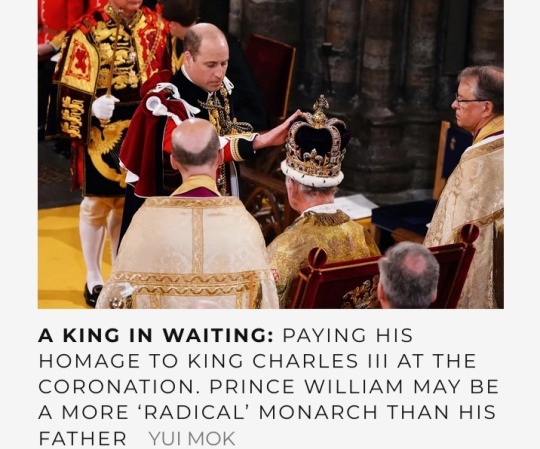
This article was first published in the May 2024 issue, on sale Thursday, 28 March.
#Prince William#Prince of Wales#British Royal Family#Wesley Kerr OBE#Edward Longshanks#Homewards#Heads Together#London’s Air Ambulance Charity#East Anglian Air Ambulance#Tom Cruise#BAFTAS#Earthshot Prize#Kensington Palace#King Charles III#Sir Ephraim Mirvis#Valentine Low#Duchy of Cornwall estate#The Passage#Centrepoint#Birkhall#Sane#Marjorie Wallace CBE#Shout#Balmoral#Prince George#Walter Bagehot#Sir Henry Marten#Rudyard Kipling#If
149 notes
·
View notes
Text
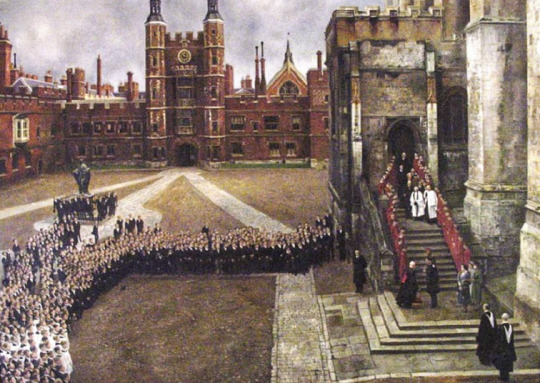
His Majesty King George VI conferring the Order of Knighthood upon Sir Henry Marten, Provost, on the steps of College Chapel
by Richard Eurich // oil on canvas, 1945-6.
Sir Clarence Henry Kennett Marten KCVO was appointed tutor to Princess Elizabeth in 1938, specifically to teach her constitutional history and theory.
AN ETON CEREMONY (March 4, 1945) // British Pathé
#King George VI#Queen Elizabeth II#Queen Mother#Princess Margaret#1945#1940s#British Royal Family#video#art
23 notes
·
View notes
Text
Legally speaking, the Golden Grape was not a true ‘wreck’. Medieval statutes, still in use in the 17th century, established that if ‘a man, a dog, or a cat escape quick out of the ship’, then it was subject to the usual laws of ownership. The merchants who had shipped the cargo should pay the salvagers ‘convenient for their travail’ in recovering it, but they were entitled to have their goods back in full if crewmen survived. Only if a ship was fully abandoned or the crew had all perished would the vessel and everything on it become res nullius, the property of no one. At sea these things were classed as flotsam (any floating object), jetsam (cargoes deliberately thrown overboard) and lagan (sunken goods marked with buoys). But once something made landfall it became wreccum maris, wreck of the sea, and open to the competing claims of salvagers, coastal landlords and crown officials.
The rudiments of wreck law were widely known. When a ship ran aground on the deadly Goodwin Sands in Kent in the late 16th century, the crew tied their dog to the mast and abandoned ship; returning later, ‘finding the dog alive ... [they] had their ship and goods again.’ Seventeenth-century lawyers were at least as ingenious as sailors in straining the hard cases. Did it matter if the survivor was a man or a woman, or if the animal was wild or domesticated – what about the red deer that swam ashore from a wreck off Norfolk in 1705? Where did the shore begin anyway? The Admiralty asserted its claim to flotsam, jetsam and lagan, and its lawyers were salty with coastal folk who waded out too far to retrieve goods. Some villages maintained that their rights extended into the sea as far as a horse could stand, or where a man could reach with a long pole; others said it was ‘so far into the seas as they could from the shore discern a Humberkin’ – apparently a kind of floating barrel. But the Admiralty judge Sir Henry Marten complained in 1637 that this was ‘an old idle saying, no man living being able to tell us what such a barrel is’.
1 note
·
View note
Text
Initial Meeting Part 2
‐------------------------------------------After the interview with Trevante. There was a long break until the next interview on stage later in the evening.
You headed back to your hotel, which connected to the event building. You decided to change into a simple all black outfit. You needed to get out and get a bit of fresh London air for a bit. You knew not to dress up so noticeably, so you also added a black cap, just to not to be recognized.
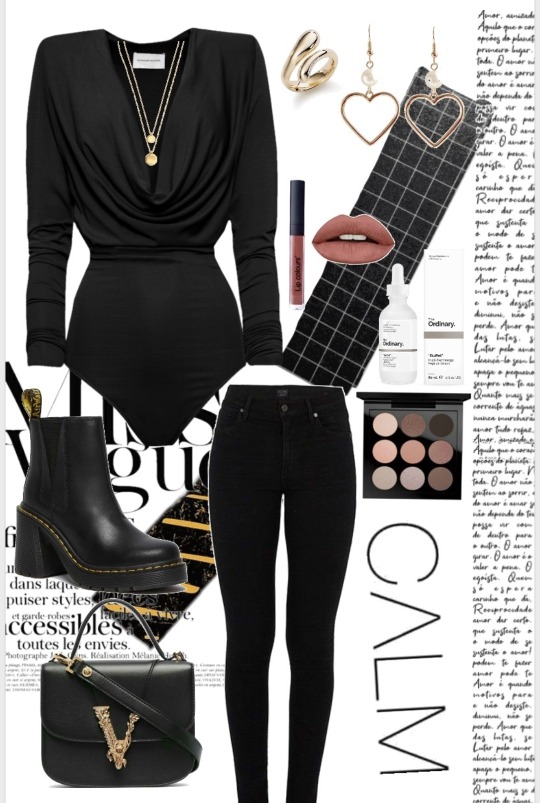
You have been to London so many times, your stylish/manager allowed you to leave on your own. As you were walking down the hallway towards the elevator, you noticed someone with a familiar stature walking towards your direction.
Omg. It's Henry. Again. Y/N thought what have I've done in my past life to be so lucky to coincidentally meet this guy again, in the hotel hallway. As Henry approached closer, Y/n could see a goofy smile on his face.
"I was only figuratively speaking when I said I'll see you around, but I guess our meeting again is truly meant to be" Henry said.
"Oh, are you calling this fate? Cause, I could have thought that you have planned all this out and that it's is less than a coincidence", y/n said sarcastically with smirk. You turn away from him to press the elevator button.
"Yes, to scare you even more, I had the concierge change my hotel room on this floor because I just knew that your room was also on the 28th floor", Henry said back sarcastically and y/n just rolled her eyes and laughed a little.
"Ha ha.", y/n grinned. Henry knew you were someone easy to joke with. Y/n just seemed so effortless with the very minimal words we have said to each other.
The elevator dinged and opened up for them. Henry gestured for y/n to go in first. "After you."
"Thank you, sir" y/n said as she head inside. Y/n pressed the lobby button, assuming that's where they both were headed. A comfortable silence took over. This was when both y/n and Henry decide that they would just take a look of the other. And when they made eye contact at the same time, they both nervously looked away and awkwardly laugh. Yeah, so much for wanting to take a good look of him, y/n thought.
Of course, Henry felt the same. He thought, what's with him? He never really felt nervous around a woman. Even when surrounded by his beautiful co-stars, he felt all the confidence he needed. But in the elevator with y/n, he was impressed by how beautiful she looked in this all black simple outfit. He was used to seeing you dress up very chic and here you were, this huge star, sporting some Doc martens.
"So, how was your interview? I hope I didn't get you in trouble for being late" Y/n said.
Henry had cleared his throat, happy that you had been the one to break the silence, because he didn't know what to say next. "It went wonderfully. No, your lucky some of my other co-stars were late and I apparently was the first to arrive.", Henry said. Y/n nodded, "good, I'm glad".
"How was yours?, Henry asked.
Y/n smiled big, taking Henry by surprised, "it was really fun, like the questions weren't repetitive, the audience was so sweet and it's always fun working with Trevante". Y/n really loved working as a an actress and Henry could hear that in her voice. He could relate with the passion for working on this type of art. When he heard Trevante's name though, he felt a tinge of jealousy for the guy. Trevante gets to hang with you all the time. He actually knows Trevante, and finds him to be one handsome talented dude. Which is why he felt a little jealous.
"Mm. That's amazing, y/n", Henry said with a slight smile.
Y/n noticed a little demeanor change and decide to ignore it. That's when the elevator opens and you pull your cap a little lower. There weren't many people around because this elevator went down to a specific side of the lobby where it was not the main entrance.
As you went out first, you turn to Henry and asked, "So where are you headed?".
"I was just headed out to get some fresh. Not sure I'll do it without being seen, but I feel like I'm suffocating", Henry admitted nervously while scratching the back of his head. Y/n understood, as much as you loved doing all of this promo work, it got exhausting and stuffy.
Y/n responded, "Looks like we both had the same idea. Were you planning anywhere in particular? Um, there is this really cute bakery called Boulangerie a couple of blocks...". "Sorry. I mean, if you don't already have a plan or want to be alone. But you could join me. If you'd like?", y/n shrugged. Mentally hitting her self for rambling. She doesn't get flustered often, but it also wasn't everyday where she got to talk to the Henry Cavill. Y/n wasn't going to let the opportunity to pass.
Henry was flattered and found you incredibly cute and sexy with your rambling. He thought maybe the feeling was mutual and that you both couldn't deny that there was some kind if connection between you two. Henry has only met you for like 2 seconds but since he was already your fan, he just knew he needs to know you. Be with you.
Henry grinned, "I think I know which one you are talking about. The very low key trying to hard to be a Parsian bakery in the middle of London kind of bakery", that made y/n laughed, calming her down and making Henry feel warmth inside.
"Yes, that one", y/n. "Will you take the lead, lad?", saying lad in a British tone. Now it was Henry's turn to laugh. "Of course, M'lady", Henry said in a very debonair way.

Henry started walking but you caught up to him, walking in sync, as you two head to the best kept secret of London.
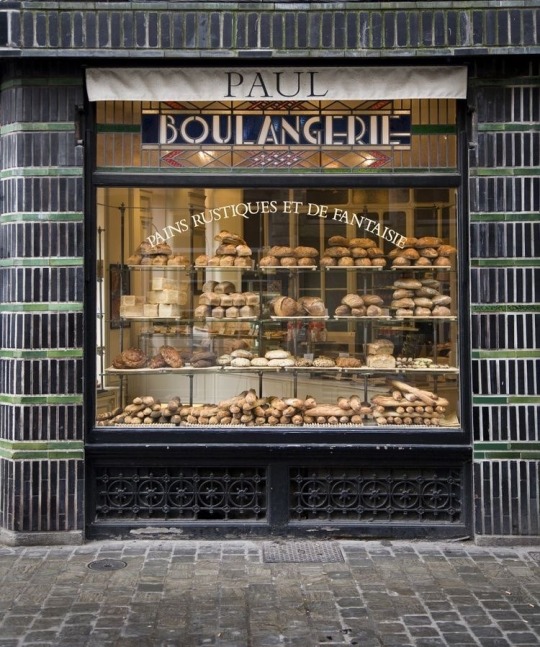
#aesthetic#bakery#henry cavill story#henry cavill imagine#henry#henry cavill fluff#henry cavill#black woman#black reader#bwwn#initial Meeting#fame#Witcher
19 notes
·
View notes
Photo

Chepstow Castle in Wales was founded by my 26th great-grandfather, William FitzOsbern, 1st Earl of Hereford in 1067, it was originally known as Striguil. Further fortifications were added by my 22nd great-grandfather, William Marshal, Earl of Pembroke and later, by my 20th great grandfather, Roger Bigod, 5th Earl of Norfolk. In 1468, the castle was part of the estates granted by the Earl of Norfolk to my 16th great-grandfather, William Herbert, 1st Earl of Pembroke, known as "Black William" in exchange for lands in the east of England. In 1508, it passed to Joshua's 15th great grandfather, Sir Charles Somerset, 1st Earl of Worcester, who remodelled the buildings extensively as private accommodation. The Castle saw Norman invasion of Wales, English Civil War, imprisonment of Henry Marten, one of the Commissioners who signed the death warrant of my second cousin 13 times removed, King Charles I by the 1700s it had fallen into decay. The Castle is now open to the public, and since 1984 has been in the care of Cadw, the Welsh Government body with the responsibility for protecting, conserving and promoting the built heritage of Wales. (at Chepstow Castle) https://www.instagram.com/p/ByQPeJFBXUK/?igshid=lt74gxfatpmj
0 notes
Photo

His Serene Highness The Count of Münnich and Reutern is delighted to share a photograph of him taken during his visit to Chepstow Castle.
The Castle was founded by the Count's 26th great-grandfather, Lord William FitzOsbern, 1st Earl of Hereford in 1067, it was originally known as Striguil.
Further fortifications were added by Joshua's 22nd great-grandfather, Lord William Marshal, Earl of Pembroke and later, by the Count's 20th great grandfather, Roger Bigod, 5th Earl of Norfolk.
In 1468, the castle was part of the estates granted by the Earl of Norfolk to his 16th great-grandfather, Lord William Herbert, 1st Earl of Pembroke, known as "Black William" in exchange for lands in the east of England.
In 1508, it passed to Joshua's 15th great grandfather, Sir Charles Somerset, 1st Earl of Worcester, who remodelled the buildings extensively as private accommodation.
The Castle saw Norman invasion of Wales, English Civil War, imprisonment of Henry Marten, one of the Commissioners who signed the death warrant of the Count's second cousin 13 times removed, Charles I, King of England, Scotland and Ireland by the 1700s it had fallen into decay.
The Castle is now open to the public, and since 1984 has been in the care of Cadw, the Welsh Government body with the responsibility for protecting, conserving and promoting the built heritage of Wales.
#chepstow#chepstow castle#wales#uk#heritage#welsh heritage#cadw#Count Joshua von Münnich und Reutern#The Count of Münnich and Reutern#Graf von Münnich und Reutern#Count Joshua von Münnich#Count Joshua von Reutern#Comte de Münnich#Comte de Reutern#The Count of Reutern
0 notes
Text
A DISCOVERY OF WITCHES Series 2 Official News!
From the Sky Press Release
A Discovery of Witches are set to be transported to Elizabethan England in the second season of the hit Sky original drama, adapted from Deborah Harkness’s bestselling All Souls trilogy and currently being produced in Cardiff by award-winning production company Bad Wolf.
This exclusive first look image from season two, shows Matthew (Matthew Goode, Downton Abbey) and Diana (Teresa Palmer, Hacksaw Ridge) on the streets of Elizabethan London, where they are hiding in time from the Congregation. Here in Elizabethan London they must find a powerful witch teacher to help Diana control her magic and search for the elusive Book of Life.
Set in a world where witches, vampires and daemons secretly live and work alongside humans, hidden in plain sight, season two also sees Steven Cree (Outlander), Sheila Hancock (Doctor Who), James Purefoy (The Following) and Paul Rhys (Vincent and Theo) join the cast.
Cree stars as Gallowglass De Clermont, a vampire and soldier of fortune who is particularly fond of his uncle, Matthew. James Purefoy plays the role of Philippe De Clermont, founder of the Congregation, commander of the Knights of Lazarus, mate of Ysabeau, and stepfather to Matthew. Paul Rhys is Andrew Hubbard, the vampire ruler of all creatures in London in 1590 and Sheila Hancock appears as elder witch Goody Alsop.
The cast for season two also includes Barbara Marten (Casualty) as Queen Elizabeth, Jacob Ifan (Cuffs) as Benjamin Fuchs, Holly Aird (Waking the Dead) as Francoise, Michael Lindall (Deep State) as Sir Walter Raleigh, Adam Sklar (Faceless) as Henry Percy, Joshua Pickering as Jack Blackfriars, Elaine Cassidy (Harper’s Island) as Louise De Clermont, Victoria Yeates (Call the Midwife) as Elizabeth Jackson / Water Witch, Adrian Rawlins (Chernobyl) as William Cecil, Lois Chimimba (Doctor Who) as Catherine Streeter/ Fire Witch, Amy McAllister (Philomena) as Marjorie Cooper/Earth Witch, Milo Twomey (Mother, Father, Son) as Pierre and the recently announced Tom Hughes (Victoria) playing Kit Marlowe.
Alongside the Elizabethan action, back in the present day, Diana’s beloved aunts, Sarah and Em, must take shelter with notorious witch hunter Ysabeau De Clermont at her ancestral home, Sept-Tours. Meanwhile, in Oxford, Marcus and Miriam take on Matthew’s mantle to protect daemons Nathaniel and Sophie, whose pregnancy is advancing. And Gerbert, Knox, Satu and Domenico are determined to hunt down every clue they can to Diana’s and Matthew’s disappearance, and the secrets their allies are keeping from them.
Cameron Roach, Sky Studios Director of Drama, said: “After the success of season one, we are really excited for the next instalment of A Discovery of Witches, as we continue to follow the love story of Diana and Matthew and their adventures in Elizabethan London. We have a great cast lined up and a unique historical setting, which we hope will further enchant fans. The hit fantasy series joins a host of new Sky original drama’s we have coming to Sky One this year”.
Jane Tranter, Executive Producer, Bad Wolf, added: “To have such high calibre talent joining an already exceptional ensemble is a testament to Deborah Harkness’ brilliant novels, Pete McTighe and Susie Conklin’s scripts and to the immensely talented cast and crew working to bring all to life. The bar was set high with season one but season two is already shaping up to take fans into a new realm as we follow Diana and Matthew into Elizabethan England. With cast like this they will not be disappointed.”
The ten-part season will also see the return of Owen Teale (Game of Thrones), Alex Kingston (Doctor Who), Lindsay Duncan (The Honourable Woman), Valarie Pettiford (Half & Half), Edward Bluemel (The Commuter), Aiysha Hart (Line of Duty), Trevor Eve (Waking the Dead), Malin Buska (The Girl King), Gregg Chillin (Being Human), Trystan Gravelle (Mr Selfridge), Tanya Moodie (Sherlock), Aisling Loftus (War and Peace) and Daniel Ezra (All American).
A Discovery of Witches season two is based on the ‘Shadow of Night’ novel from Deborah Harkness’s All Souls trilogy and will be coming to Sky One and NOW TV next year. Season one was the most popular series on Sky One last year, bewitching nearly 2million viewers and it was nominated for the ‘New Drama’ category at this year’s National TV Awards.
The show was commissioned by Zai Bennett, Managing Director of Content, Sky UK and Ireland, and Cameron Roach, Director of Drama, Sky Studios. Kara Manley is the executive producer for Sky. Made by Bad Wolf Limited, A Discovery of Witches Series two is written by Sarah Dollard (Doctor Who, Being Human), Susie Conklin (The Musketeers, Cranford) and Pete McTighe (Doctor Who) who also serve as executive producers alongside co-founders of Bad Wolf, Jane Tranter and Lachlan MacKinnon along with Deborah Harkness. The series is directed by BAFTA award winning Farren Blackburn (The Fades, Daredevil), Philippa Langdale (Skins, Waking the Dead) and Jonathan Teplitzkt (Broadchurch).
0 notes
Text
Like the real thing, The Great Escape 2019 is not going to end well
By happy, or otherwise, coincidence, last Sunday marked the 75th anniversary of The Great Escape, the World War II prison camp breakout which spawned a hit movie and an England football anthem.
The theme music from the 1963 film, composed by Elmer Bernstein, is as much a part of our national soundtrack as Jerusalem, Land Of Hope And Glory and Waterloo Sunset.
A few years ago, I was invited to the Proms for Elmer’s Hollywood Songbook concert, which included his music from The Magnificent Seven, Thoroughly Modern Millie and Cecil B. DeMille’s The Ten Commandments.
Bernstein was conducting, and when the Royal Philharmonic Orchestra launched into The Great Escape, the audience at the Royal Albert Hall rose to its feet, as a man and woman, clapping and singing along.
Da-da,
Da-da, da, da-da.
Da-da,
Da, da-da,
Da-da!
Never mind The Last Night, and all those blue and yellow, face-painted Guardianistas, looking like a bunch of Smurfs, and waving EU flags, while trying to hijack one of the great events in the British calendar to promote their own political bigotry.
The spontaneous Great Escape sketch was the best thing I’d ever seen at Sir Henry Wood’s gaff. In the words of the great Chuck Berry, the joint was rockin’.
And, trust me, I’ve seen everything from Bob Dylan, Eric Clapton and the opera La Boheme to Joan Baez, Carl Perkins and Wilko Johnson, Canvey Island’s finest, at the Albert Hall.
I was even there the day Gerald Ratner crashed his company by telling the Institute of Directors conference that some of the jewellery he was knocking out was not worth the price of a Marks & Spencer prawn sandwich.
The Bernstein concert wasn’t one of those poncey metropolitan elite nights, where smug, self-reverential ‘intellectuals’ disguise their moral and financial impoverishment inside shiny dinner suits from the Oxfam shop, and parade their superior disdain for the Great Unwashed — the knuckle-scraping, low-information, racist Little Englanders who had the audacity to vote for Brexit.
Prime Minister Theresa May leaves 10 Downing Street for the House of Commons for key Brexit votes yesterday
No way, Pedro. This was Daily Mail Land en fete, coachloads of proper people from Beyond The North Circular Road, the very folk our own dear, and much-missed, Jack Tinker used to address when he was writing his peerless theatre reviews.
At the end of the evening’s entertainment, we wandered into Kensington Gore, in search of Last Orders, humming and whistling the theme from The Great Escape.
Da-da,
Da-da, da, da-da.
Da-da,
Da, da-da,
Da-da!
Bernstein himself looked baffled at the ecstatic reception which greeted his wartime meisterwerk.
Nobody else was, least of all me. For better or worse, World War II is deeply embedded in our national psyche.
We revere the sacrifices made by our parents’ and grandparents’ generations to protect our independence. We are inspired by the stoicism, the stiff upper lips, of those who came before.
Old gits like me were raised on black-and-white movies about British prisoners of war, plotting their escape. No wet Sunday afternoon on TV was complete without one — The Wooden Horse, Albert RN, The Colditz Story.
It’s who we are.
OK, so The Great Escape was in glorious Technicolor and Cinemascope, the best out of Hollywood, and featured James Coburn as a dodgy Aussie, with the worst accent since Dick Van Dyke played a Cock-er-ney chimney sweep in Mary Poppins.
Most of the time, Coburn sounded Irish.
But it also featured Dear, Dear Dickie Attenborough, Cowley from The Professionals and Upstairs, Downstairs, and Nigel Stock, who starred alongside Dear, Dear Dickie in Brighton Rock, as well as playing Dr Watson to Peter Cushing’s Sherlock Holmes.
Machine-gun towers would be manned by Remoaners
Although it took the usual Hollywood liberties, the film was based on a true story. In 1943, the Germans set up a special camp, Stalag Luft III, to house Allied prisoners of war who had previously escaped. Once banged up together, the chaps decide that they will stage the biggest breakout in history.
They dig three tunnels, called ‘Tom, Dick and Harry’, tailor civilian clothes and forge identity papers. Their aim is to liberate 250 men all at once, regardless of the dangers.
This being Hollywood, the Yanks are over-represented. Charles ‘Death Wish’ Bronson, who made his name playing an Apache, pretends to be Polish, and Jim Rockford is an American serving with the RAF — presumably because he can’t manage a Polish, Australian or Oirish accent.
The British are portrayed by, among others, David McCallum, (Illya Kuryakin from The Man From U.N.C.L.E.), and ‘Johnny, Remember Me’ Leyton, from Von Ryan’s Express and Joe Meek’s famous recording studio on the Holloway Road.
Star of the show is a pre-Bullitt Steve McQueen, a baseball-throwing American, who — in the movie’s best-loved scene — eventually ploughs a motorbike into a barbed wire fence as he attempts to evade his captors.
American Steve McQueen poses on a motorbike in The Great Escape, released in 1963
McQueen lives to fight another day, but most of the escapees are recaptured and mown down by the Gestapo, on Hitler’s direct orders. Only three go on to make a ‘home run’.
On Sunday, at a ceremony in Poland, RAF officers and airmen held photos of the 50 men murdered after breaking out of Stalag Luft III. The last survivors of the daring escape, Dick Churchill, aged 99, and Jack Lyon, 101, died recently. I wonder what they’d have made of the preening Remoaners who marched against democracy this weekend.
As it happened, I was in Central London on Saturday. If there was a tenth of the million marchers they claimed turned out to try to overturn the Brexit vote, I’d be astonished.
Rattling in on the Piccadilly Line from Daily Mail Land, it wasn’t until we crossed the North Circular Road that the demonstrators started getting on board. First up was a scruffy bird in Doc Martens and one of those Intifada scarves. She was brandishing a tatty cardboard ‘Stop Leave’ sign.
By the time we’d reached Islington, spiritual home of Remain, there were a few more of them, all looking very pleased with themselves.
Curiously, the local MP, O.J. Corbyn, wasn’t among them.
He’d legged it up north to be photographed doing a silly dance alongside the statue of Eric Morecambe. Presumably, because he’s always been in favour of leaving the EU, despite what he says for public consumption.
Anyway, I digress. I couldn’t help wondering what the remake of The Great Escape would look like today.
Boris, Rees-Mogg and Farage (Tom, Dick and Harry) would be attempting to tunnel their way out of Stalag Luft 2019, while the likes of Spread Fear Phil and Look Back In Amber were grassing them up to the guards.
The machine-gun towers would be manned by Remoaners like Dominique Grieve, Bercow, Chucky Umunna and Soubry Lou.
Rees-Mogg and Farage along with Boris Johnson would be attempting to tunnel their way out fo Stalag Luft 2019
Chuka Umunna and Anna Soubry from The Independent Group leave the Cabinet Office in Whitehall last week
Meanwhile, Mother Theresa would be doing her best Steve McQueen impersonation, ploughing her motorbike into the barbed wire in a doomed third attempt at a meaningful escape.
Like the real thing, The Great Escape 2019 is not going to end well. Altogether now:
Da-da,
Da-da, da, da-da.
Da-da,
Da, da-da,
Da-da!
The post Like the real thing, The Great Escape 2019 is not going to end well appeared first on Gyrlversion.
from WordPress https://www.gyrlversion.net/like-the-real-thing-the-great-escape-2019-is-not-going-to-end-well/
0 notes
Text
When Orson Welles Met H.G. Wells: Two Years After The War of the Worlds Panic, the Two Icons Finally Met
Visit Now - http://zeroviral.com/when-orson-welles-met-h-g-wells-two-years-after-the-war-of-the-worlds-panic-the-two-icons-finally-met/
When Orson Welles Met H.G. Wells: Two Years After The War of the Worlds Panic, the Two Icons Finally Met
In February 2017, Queen Elizabeth II celebrated her Sapphire Jubilee, marking her 65-year reign as Queen of England. Her Majesty surpassed her great-great-grandmother, Queen Victoria, who reigned for 63 years, as Britain’s longest-ruling monarch, and now also holds the title of the world’s longest-reigning monarch. Here are 25 more royal facts about Queen Elizabeth.
1. SHE WASN’T BORN AN HEIR APPARENT TO THE THRONE.
For the first 10 years of her life, Princess Elizabeth was a relatively minor royal—her status was akin to Princesses Beatrice and Eugenie of York today—but that all changed with the death of her grandfather, King George V, in 1936.
The next in the line of royal succession was Elizabeth’s uncle, Edward VIII, who abdicated the throne less than a year after taking it so that he could marry an American socialite named Wallis Simpson. Edward didn’t have any children at the time, so his brother Albert (Elizabeth’s father) ascended to the throne, taking the name George VI and making the then-10-year-old Elizabeth the first in line to become Queen.
2. HER YOUNGER SISTER GAVE HER A FAMILY NICKNAME.
Elizabeth and Margaret were the only children of Queen Elizabeth the Queen Mother and King George VI, who said of his daughters: “Lilibet is my pride, Margaret my joy.” “Lilibet,” of course, is Elizabeth, who earned her nickname because Margaret—whom the family affectionately called Margot—constantly mispronounced her big sister’s name.
3. SHE DIDN’T GO TO SCHOOL.
Fox Photos, Hulton Archive/Getty Images
Heirs apparent don’t just show up to primary school like normal kids. Instead, Elizabeth was tutored at home during sessions by different teachers like Henry Marten, vice-provost of Eton College (which is still for boys only), and was also given private religion lessons by the Archbishop of Canterbury.
4. BUT SHE AND MARGARET TECHNICALLY DID HAVE A TEACHER.
London Express, Getty Images
Just because she didn’t attend school doesn’t mean that Elizabeth didn’t receive an education. She received the bulk of it through her nanny, Marion Crawford, who the royal family referred to as “Crawfie.” Crawford would eventually be ostracized by the royal family for writing a tell-all book in 1953 called The Little Princesses without their permission; the book recounted Crawford’s experiences with Elizabeth during her younger days.
5. SHE WANTED TO GO TO WAR, BUT WAS TOO YOUNG.
Central Press, Hulton Archive/Getty Images
When World War II broke out in 1939, Elizabeth—then just a teenager—begged her father to join the effort somehow. She started out by making radio broadcasts geared toward raising the morale of British children. During one of the broadcasts, the 14-year-old princess reassured listeners, “I can truthfully say to you all that we children at home are full of cheerfulness and courage. We are trying to do all we can to help our gallant sailors, soldiers, and airmen and we are trying too to bear our own share of the danger and sadness of war.”
6. SHE EVENTUALLY SERVED IN WORLD WAR II.
Central Press, Hulton Archive/Getty Images
Despite the risks, Elizabeth eventually joined the women’s Auxiliary Territorial Service and trained as a truck driver and mechanic in 1945, when she was 18 years old.
Queen Elizabeth remains the only female royal family member to have entered the armed forces, and is currently the only living head of state who officially served in World War II.
7. SHE CELEBRATED THE END OF THE WAR BY PARTYING LIKE HER SUBJECTS.
William Vanderson, Fox Photos/Getty Images
When then-Prime Minister Winston Churchill announced that the war in Europe was over on May 8, 1945, people poured out into the streets of London to celebrate—including Princesses Elizabeth and Margaret. The sheltered duo were allowed to sneak out of Buckingham Palace to join the revelers at their father’s behest.
“It was a unique burst of personal freedom,” recalled Margaret Rhodes, their cousin who went with them, “a Cinderella moment in reverse.”
8. SHE MARRIED HER COUSIN.
Prince Philip, Duke of Edinburgh and Queen Elizabeth are third cousins; both share the same great-great-grandparents: Queen Victoria and Prince Albert.
9. ELIZABETH AND HER HUSBAND HAVE KNOWN EACH OTHER SINCE CHILDHOOD.
Philip, son of Prince Andrew of Greece and Denmark and Princess Alice of Battenberg, first met Elizabeth when she was only eight years old and he was 14. Both attended the wedding of Princess Marina of Greece (Prince Philip’s cousin) and Prince George, the Duke of Kent (Elizabeth’s uncle).
Five years later the pair met again when George VI brought Elizabeth to tour the Royal Naval College in Dartmouth, where Philip was a cadet. In a personal note, Elizabeth recalled falling for the young soldier-in-the-making: “I was 13 years of age and he was 18 and a cadet just due to leave. He joined the Navy at the outbreak of war, and I only saw him very occasionally when he was on leave—I suppose about twice in three years,” she wrote. “Then when his uncle and aunt, Lord and Lady Mountbatten, were away he spent various weekends away with us at Windsor.”
10. SHE DIDN’T TELL HER PARENTS SHE WAS GETTING HITCHED.
In 1946, Philip proposed to Elizabeth when the former planned a month-long visit to Balmoral, her royal estate in Scotland. She accepted the proposal without even contacting her parents. But when George VI finally caught wind of the pending nuptials he would only officially approve if they waited to announce the engagement until after her 21st birthday.
The official public announcement of the engagement finally came nearly a year later on July 9, 1947.
11. SHE HAS A VERY ROYAL NAME.
Reg Speller, Fox Photos/Getty Images
She’s the second British monarch named Elizabeth, but Elizabeth II wasn’t named after Henry VIII’s famous progeny. Queen Elizabeth II’s birth name is Elizabeth Alexandra Mary, after the names of her mother, Elizabeth, her paternal great-grandmother, Queen Alexandra, and her paternal grandmother, Queen Mary.
12. SHE GOT TO CHOOSE HER OWN SURNAME.
Technically, the Queen’s last name is “Windsor,” which was first chosen by George V in 1917 after the royal family wanted to distance themselves from “Saxe-Coburg-Gotha”—the dynasty to which they belonged—for sounding too Germanic during World War I.
But as a way to distinguish themselves from the rest of the royal family, in 1960 Elizabeth and Philip adopted the official surname Windsor-Mountbatten. (Fans will surely remember that the surname drama was briefly discussed in Netflix’s series The Crown.)
13. SHE HAS TWO BIRTHDAYS.
Like most British monarchs, Elizabeth gets to celebrate her birthday twice, and the reason why boils down to seasonably appropriate pomp and circumstance.
She was born on April 21, 1926, but April was deemed too cold and liable to fall during inclement weather. So instead, her official state-recognized birthday occurs on a Saturday in late May or June, so that the celebration can be held during warmer months. The specific date varies year to year in the UK, and usually coincides with Trooping the Colour, Britain’s annual military pageant.
14. HER CORONATION WAS TELEVISED AGAINST HER WISHES.
Elizabeth officially ascended to the throne at just 25 years of age when her father, George VI, died on February 6, 1952. Elizabeth was in Kenya at the time of his death and returned home as her country’s Queen. As fans of The Crown will remember, the hubbub surrounding her coronation was filled with ample amounts of drama.
The notoriously camera-shy Elizabeth—who didn’t even allow photos to be taken of her wedding—didn’t want the event televised, and others believed that broadcasting the coronation to commoners would break down upper-class traditions of only allowing members of British high society to witness the event. A Coronation Commission, chaired by Philip, was set up to weigh the options, and they initially decided to only allow cameras in a single area of Westminster Abbey “west of the organ screen,” before allowing the entire thing to be televised with one minor caveat: no close-ups on Elizabeth’s face.
15. SHE PAID FOR HER WEDDING DRESS USING WAR RATION COUPONS.
Central Press, Getty Images
Still reeling from an atmosphere of post-war austerity, Elizabeth used ration coupons and a 200-coupon supplement from the government to pay for her wedding dress. But don’t be fooled, the dress was extremely elegant; it was made of ivory duchesse silk, encrusted with 10,000 imported seed pearls, took six months to make, and sported a 13-foot train. (It cost just under $40,000 to recreate the dress for The Crown.)
16. SHE DOESN’T NEED A PASSPORT TO TRAVEL.
STRINGER, AFP/Getty Images
Elizabeth II is the world’s most well-traveled head of state, visiting 116 countries between 265 official state visits, but she doesn’t even own a passport. Since all British passports are officially issued in the Queen’s name, she technically doesn’t need one.
17. SHE DOESN’T NEED A DRIVER’S LICENSE EITHER.
Bob Haswell, Express/Getty Images
It’s not just because she has a fleet of chauffeurs. Britain also officially issues driver’s licenses in Elizabeth’s name, so don’t expect her to show off her ID when she gets pulled over taking other heads of state for a spin in her Range Rover.
Sir Sherard Cowper-Coles, former British ambassador to Saudi Arabia, recounted to The Sunday Times the time when Elizabeth drove former Saudi crown prince Abdullah around the grounds of Balmoral: “To his surprise, the Queen climbed into the driving seat, turned the ignition and drove off,” he said. “Women are not—yet—allowed to drive in Saudi Arabia, and Abdullah was not used to being driven by a woman, let alone a queen.”
18. SHE DOESN’T HAVE TO PAY TAXES (BUT CHOOSES TO ANYWAY).
ODD ANDERSEN, AFP/Getty Images
Queen Elizabeth has voluntarily paid income and capital gains taxes since 1992, but has always been subject to Value Added Tax.
19. SHE SURVIVED AN ASSASSINATION ATTEMPT.
STRINGER, AFP/Getty Images
During the 1981 Trooping the Colour, the Queen led a royal procession on horseback down the Mall toward Buckingham Palace when shots rang out. A 17-year-old named Marcus Sarjeant, who was obsessed with the assassinations of figures like John Lennon and John F. Kennedy, fired a series of blanks toward Elizabeth. Sarjeant—who wrote in his diary, “I am going to stun and mystify the whole world with nothing more than a gun”—was thankfully unable to purchase live ammunition in the UK. He received a prison sentence of five years under the 1848 Treason Act, but was released in October 1984.
20. SHE ALSO SURVIVED AN INTRUDER COMING INTO HER BEDROOM.
Fox Photos, Hulton Archive/Getty Images
A year after the Trooping the Colour incident, Elizabeth had another run-in. But instead of near Buckingham Palace, this time it was inside Buckingham Palace. On July 9, 1982, a man named Michael Fagen managed to climb over the Palace’s barbed wire fence, shimmy up a drain pipe, and eventually sneak into the Queen’s bedroom.
While reports at the time said Fagen and the Queen had a long conversation before he was apprehended by palace security, Fagen told The Independent the Queen didn’t stick around to chat: “She went past me and ran out of the room; her little bare feet running across the floor.”
21. SHE TECHNICALLY OWNS ALL THE DOLPHINS IN THE UK.
Keystone, Hulton Archive/Getty Images
In addition to owning all of the country’s dolphins, she owns all the sturgeon and whales, too. A still-valid statute from the reign of King Edward II in 1324 states, “Also the King shall have … whales and sturgeons taken in the sea or elsewhere within the realm,” meaning most aquatic creatures are technically labeled “fishes royal,” and are claimed on behalf of the Crown.
As the song goes, “Rule, Britannia! Britannia rules the waves!”
22. SHE HAS HER OWN SPECIAL MONEY TO GIVE TO THE POOR.
PHIL NOBLE, AFP/Getty Images
Known as “maundy money,” the Queen has silver coins—currently with Elizabeth’s likeness on the front—that are given to pensioners in a ceremony called Maundy Thursday. The royal custom dates back to the 13th century, in which the royal family was expected to wash the feet of and distribute gifts to penniless subjects as a symbolic gesture to honor Jesus’s act of washing the feet of the poor in the Bible. Once the 18th century rolled around and washing people’s dirty feet wasn’t seen as befitting of a royal, the act was replaced with money allowances bequeathed by the monarch.
23. GIN IS HER DRINK OF CHOICE.
RUSSEL MILLARD, AFP/Getty Images
The Queen drinks gin mixed with Dubonnet (a fortified wine) and a slice of lemon on the rocks every day before lunch. She also reportedly drinks wine at lunch and has a glass of champagne every evening.
24. SHE CREATED HER OWN BREED OF DOGS.
Elizabeth has a famous, avowed love of Corgis (she has owned more than 30 of them during her reign, but currently only owns one, named Willow), but what about Dorgis? She currently owns two Dorgis (Candy and Vulcan), a crossbreed she engineered when one of her Corgis mated with a Dachshund named Pipkin that belonged to Princess Margaret.
25. SHE’S ON SOCIAL MEDIA … KIND OF.
John Stillwell, Pool/Getty Images
It is a pleasure to open the Information Age exhibition today at the @ScienceMuseum and I hope people will enjoy visiting. Elizabeth R.
— The Royal Family (@RoyalFamily) October 24, 2014
The Queen joined Twitter in July 2009 under the handle @RoyalFamily, and sent the first tweet herself, but hasn’t personally maintained the page since then. In fact, a job listing went up in 2017 looking for an official royal Digital Communications Officer to help out. She’s also on Facebook (and no, you cannot poke The Royal Family).
This story originally ran in 2017.
0 notes
Text
Hepworth Wakefield wins Art Fund UK Museum of the Year prize
The Hepworth Wakefield was named the 2017 UK Museum of the Year, winning last night (5 July) the Art Fund’s prestigious, 100,000 first prize. The David Chipperfield-designed gallery in the Yorkshire town where the sculptor Barbara Hepworth grew up, was competing in a strong field, which included London’s new, expanded Tate Modern.
Speaking at the award ceremony held in the Great Court of the British Museum, the chair of the Hepworth Wakefield, David Liddiment, attributed its success to the fact that over the past six years since it opened, the gallery has stayed true to “the plan". The television executive said it has avoided being parochial while being proud of Wakefield and Yorkshire’s, artistic heritage. "We have a world-class building and bring world-class artists to Wakefield," adding that it had "reclaimed" Barbara Hepworth from St Ives, where she lived and worked and London.
The leading sculptor, Richard Deacon, who was one of the judge of this year’s award, took a longer view of the gallery’s achievement, recalling the visionary curator of Leed’s Henry Moore Institute, when it was being built, Robert Hopper. In the 1990s Hopper began to bring artists including James Turrell, Christian Boltanski and Michaelangelo Pistaletto among others to Dean Clough, former carpet mills in nearby Halifax.
Hopper, who died aged 53 in 2000, worked closely with Peter Murray, the founding director of the Yorkshire Sculpture Park, which is near Wakefield, to make the region a centre for international art. "Hopper had a very grand vision for Leeds, Barnsley, Halifax and Wakefield as a sculptural centre, that was not solely tied to the local heroes, Hepworth and Moore," Deacon told The Art Newspaper.
The Hepworth gallery’s recent achievements have included the launch of the Hepworth Sculpture Prize and exhibition. The inaugural prize was won in 2016 by Helen Marten, with David Medella, Phyllida Barlow and Steven Claydon the runners up. Meanwhile, Magnum photographer Martin Parr celebrated the "rhubarb triangle" around Wakefield, documenting its growers for the gallery.
The win was especially satisfying for Simon Wallis, the director of the gallery, his team and Sophie Bowness, the art historian and artist’s granddaughter, because in 2012 the Hepworth was a runner up in the Art Fund-sponsored award to Exeter’s Royal Albert Memorial Museum.
This year the shortlisted museums besides Tate Modern were the Lapworth, a small university geology museum in Birmingham, Sir John Soane’s Museum in London and Newmarket’s national museum of horseracing and sporting art. Each receives a 10,000 consolation prize.
View Full Article Here: Hepworth Wakefield wins Art Fund UK Museum of the Year prize
Hepworth Wakefield wins Art Fund UK Museum of the Year prize was originally published on CALM | We Drive The Calmest, Strive Regardless
#Arts#Design#Film#Graphic Design#Hepworth Wakefield wins Art Fund UK Museum of the Year prize#Hip Hop#inspiration#Interior Design#Visual#CALM#calmmix#calmblog#thecalmest
0 notes
Text
11 African American Inventors Who Changed the World
Visit Now - http://zeroviral.com/11-african-american-inventors-who-changed-the-world/
11 African American Inventors Who Changed the World
In February 2017, Queen Elizabeth II celebrated her Sapphire Jubilee, marking her 65-year reign as Queen of England. Her Majesty surpassed her great-great-grandmother, Queen Victoria, who reigned for 63 years, as Britain’s longest-ruling monarch, and now also holds the title of the world’s longest-reigning monarch. Here are 25 more royal facts about Queen Elizabeth.
1. SHE WASN’T BORN AN HEIR APPARENT TO THE THRONE.
For the first 10 years of her life, Princess Elizabeth was a relatively minor royal—her status was akin to Princesses Beatrice and Eugenie of York today—but that all changed with the death of her grandfather, King George V, in 1936.
The next in the line of royal succession was Elizabeth’s uncle, Edward VIII, who abdicated the throne less than a year after taking it so that he could marry an American socialite named Wallis Simpson. Edward didn’t have any children at the time, so his brother Albert (Elizabeth’s father) ascended to the throne, taking the name George VI and making the then-10-year-old Elizabeth the first in line to become Queen.
2. HER YOUNGER SISTER GAVE HER A FAMILY NICKNAME.
Elizabeth and Margaret were the only children of Queen Elizabeth the Queen Mother and King George VI, who said of his daughters: “Lilibet is my pride, Margaret my joy.” “Lilibet,” of course, is Elizabeth, who earned her nickname because Margaret—whom the family affectionately called Margot—constantly mispronounced her big sister’s name.
3. SHE DIDN’T GO TO SCHOOL.
Fox Photos, Hulton Archive/Getty Images
Heirs apparent don’t just show up to primary school like normal kids. Instead, Elizabeth was tutored at home during sessions by different teachers like Henry Marten, vice-provost of Eton College (which is still for boys only), and was also given private religion lessons by the Archbishop of Canterbury.
4. BUT SHE AND MARGARET TECHNICALLY DID HAVE A TEACHER.
London Express, Getty Images
Just because she didn’t attend school doesn’t mean that Elizabeth didn’t receive an education. She received the bulk of it through her nanny, Marion Crawford, who the royal family referred to as “Crawfie.” Crawford would eventually be ostracized by the royal family for writing a tell-all book in 1953 called The Little Princesses without their permission; the book recounted Crawford’s experiences with Elizabeth during her younger days.
5. SHE WANTED TO GO TO WAR, BUT WAS TOO YOUNG.
Central Press, Hulton Archive/Getty Images
When World War II broke out in 1939, Elizabeth—then just a teenager—begged her father to join the effort somehow. She started out by making radio broadcasts geared toward raising the morale of British children. During one of the broadcasts, the 14-year-old princess reassured listeners, “I can truthfully say to you all that we children at home are full of cheerfulness and courage. We are trying to do all we can to help our gallant sailors, soldiers, and airmen and we are trying too to bear our own share of the danger and sadness of war.”
6. SHE EVENTUALLY SERVED IN WORLD WAR II.
Central Press, Hulton Archive/Getty Images
Despite the risks, Elizabeth eventually joined the women’s Auxiliary Territorial Service and trained as a truck driver and mechanic in 1945, when she was 18 years old.
Queen Elizabeth remains the only female royal family member to have entered the armed forces, and is currently the only living head of state who officially served in World War II.
7. SHE CELEBRATED THE END OF THE WAR BY PARTYING LIKE HER SUBJECTS.
William Vanderson, Fox Photos/Getty Images
When then-Prime Minister Winston Churchill announced that the war in Europe was over on May 8, 1945, people poured out into the streets of London to celebrate—including Princesses Elizabeth and Margaret. The sheltered duo were allowed to sneak out of Buckingham Palace to join the revelers at their father’s behest.
“It was a unique burst of personal freedom,” recalled Margaret Rhodes, their cousin who went with them, “a Cinderella moment in reverse.”
8. SHE MARRIED HER COUSIN.
Prince Philip, Duke of Edinburgh and Queen Elizabeth are third cousins; both share the same great-great-grandparents: Queen Victoria and Prince Albert.
9. ELIZABETH AND HER HUSBAND HAVE KNOWN EACH OTHER SINCE CHILDHOOD.
Philip, son of Prince Andrew of Greece and Denmark and Princess Alice of Battenberg, first met Elizabeth when she was only eight years old and he was 14. Both attended the wedding of Princess Marina of Greece (Prince Philip’s cousin) and Prince George, the Duke of Kent (Elizabeth’s uncle).
Five years later the pair met again when George VI brought Elizabeth to tour the Royal Naval College in Dartmouth, where Philip was a cadet. In a personal note, Elizabeth recalled falling for the young soldier-in-the-making: “I was 13 years of age and he was 18 and a cadet just due to leave. He joined the Navy at the outbreak of war, and I only saw him very occasionally when he was on leave—I suppose about twice in three years,” she wrote. “Then when his uncle and aunt, Lord and Lady Mountbatten, were away he spent various weekends away with us at Windsor.”
10. SHE DIDN’T TELL HER PARENTS SHE WAS GETTING HITCHED.
In 1946, Philip proposed to Elizabeth when the former planned a month-long visit to Balmoral, her royal estate in Scotland. She accepted the proposal without even contacting her parents. But when George VI finally caught wind of the pending nuptials he would only officially approve if they waited to announce the engagement until after her 21st birthday.
The official public announcement of the engagement finally came nearly a year later on July 9, 1947.
11. SHE HAS A VERY ROYAL NAME.
Reg Speller, Fox Photos/Getty Images
She’s the second British monarch named Elizabeth, but Elizabeth II wasn’t named after Henry VIII’s famous progeny. Queen Elizabeth II’s birth name is Elizabeth Alexandra Mary, after the names of her mother, Elizabeth, her paternal great-grandmother, Queen Alexandra, and her paternal grandmother, Queen Mary.
12. SHE GOT TO CHOOSE HER OWN SURNAME.
Technically, the Queen’s last name is “Windsor,” which was first chosen by George V in 1917 after the royal family wanted to distance themselves from “Saxe-Coburg-Gotha”—the dynasty to which they belonged—for sounding too Germanic during World War I.
But as a way to distinguish themselves from the rest of the royal family, in 1960 Elizabeth and Philip adopted the official surname Windsor-Mountbatten. (Fans will surely remember that the surname drama was briefly discussed in Netflix’s series The Crown.)
13. SHE HAS TWO BIRTHDAYS.
Like most British monarchs, Elizabeth gets to celebrate her birthday twice, and the reason why boils down to seasonably appropriate pomp and circumstance.
She was born on April 21, 1926, but April was deemed too cold and liable to fall during inclement weather. So instead, her official state-recognized birthday occurs on a Saturday in late May or June, so that the celebration can be held during warmer months. The specific date varies year to year in the UK, and usually coincides with Trooping the Colour, Britain’s annual military pageant.
14. HER CORONATION WAS TELEVISED AGAINST HER WISHES.
Elizabeth officially ascended to the throne at just 25 years of age when her father, George VI, died on February 6, 1952. Elizabeth was in Kenya at the time of his death and returned home as her country’s Queen. As fans of The Crown will remember, the hubbub surrounding her coronation was filled with ample amounts of drama.
The notoriously camera-shy Elizabeth—who didn’t even allow photos to be taken of her wedding—didn’t want the event televised, and others believed that broadcasting the coronation to commoners would break down upper-class traditions of only allowing members of British high society to witness the event. A Coronation Commission, chaired by Philip, was set up to weigh the options, and they initially decided to only allow cameras in a single area of Westminster Abbey “west of the organ screen,” before allowing the entire thing to be televised with one minor caveat: no close-ups on Elizabeth’s face.
15. SHE PAID FOR HER WEDDING DRESS USING WAR RATION COUPONS.
Central Press, Getty Images
Still reeling from an atmosphere of post-war austerity, Elizabeth used ration coupons and a 200-coupon supplement from the government to pay for her wedding dress. But don’t be fooled, the dress was extremely elegant; it was made of ivory duchesse silk, encrusted with 10,000 imported seed pearls, took six months to make, and sported a 13-foot train. (It cost just under $40,000 to recreate the dress for The Crown.)
16. SHE DOESN’T NEED A PASSPORT TO TRAVEL.
STRINGER, AFP/Getty Images
Elizabeth II is the world’s most well-traveled head of state, visiting 116 countries between 265 official state visits, but she doesn’t even own a passport. Since all British passports are officially issued in the Queen’s name, she technically doesn’t need one.
17. SHE DOESN’T NEED A DRIVER’S LICENSE EITHER.
Bob Haswell, Express/Getty Images
It’s not just because she has a fleet of chauffeurs. Britain also officially issues driver’s licenses in Elizabeth’s name, so don’t expect her to show off her ID when she gets pulled over taking other heads of state for a spin in her Range Rover.
Sir Sherard Cowper-Coles, former British ambassador to Saudi Arabia, recounted to The Sunday Times the time when Elizabeth drove former Saudi crown prince Abdullah around the grounds of Balmoral: “To his surprise, the Queen climbed into the driving seat, turned the ignition and drove off,” he said. “Women are not—yet—allowed to drive in Saudi Arabia, and Abdullah was not used to being driven by a woman, let alone a queen.”
18. SHE DOESN’T HAVE TO PAY TAXES (BUT CHOOSES TO ANYWAY).
ODD ANDERSEN, AFP/Getty Images
Queen Elizabeth has voluntarily paid income and capital gains taxes since 1992, but has always been subject to Value Added Tax.
19. SHE SURVIVED AN ASSASSINATION ATTEMPT.
STRINGER, AFP/Getty Images
During the 1981 Trooping the Colour, the Queen led a royal procession on horseback down the Mall toward Buckingham Palace when shots rang out. A 17-year-old named Marcus Sarjeant, who was obsessed with the assassinations of figures like John Lennon and John F. Kennedy, fired a series of blanks toward Elizabeth. Sarjeant—who wrote in his diary, “I am going to stun and mystify the whole world with nothing more than a gun”—was thankfully unable to purchase live ammunition in the UK. He received a prison sentence of five years under the 1848 Treason Act, but was released in October 1984.
20. SHE ALSO SURVIVED AN INTRUDER COMING INTO HER BEDROOM.
Fox Photos, Hulton Archive/Getty Images
A year after the Trooping the Colour incident, Elizabeth had another run-in. But instead of near Buckingham Palace, this time it was inside Buckingham Palace. On July 9, 1982, a man named Michael Fagen managed to climb over the Palace’s barbed wire fence, shimmy up a drain pipe, and eventually sneak into the Queen’s bedroom.
While reports at the time said Fagen and the Queen had a long conversation before he was apprehended by palace security, Fagen told The Independent the Queen didn’t stick around to chat: “She went past me and ran out of the room; her little bare feet running across the floor.”
21. SHE TECHNICALLY OWNS ALL THE DOLPHINS IN THE UK.
Keystone, Hulton Archive/Getty Images
In addition to owning all of the country’s dolphins, she owns all the sturgeon and whales, too. A still-valid statute from the reign of King Edward II in 1324 states, “Also the King shall have … whales and sturgeons taken in the sea or elsewhere within the realm,” meaning most aquatic creatures are technically labeled “fishes royal,” and are claimed on behalf of the Crown.
As the song goes, “Rule, Britannia! Britannia rules the waves!”
22. SHE HAS HER OWN SPECIAL MONEY TO GIVE TO THE POOR.
PHIL NOBLE, AFP/Getty Images
Known as “maundy money,” the Queen has silver coins—currently with Elizabeth’s likeness on the front—that are given to pensioners in a ceremony called Maundy Thursday. The royal custom dates back to the 13th century, in which the royal family was expected to wash the feet of and distribute gifts to penniless subjects as a symbolic gesture to honor Jesus’s act of washing the feet of the poor in the Bible. Once the 18th century rolled around and washing people’s dirty feet wasn’t seen as befitting of a royal, the act was replaced with money allowances bequeathed by the monarch.
23. GIN IS HER DRINK OF CHOICE.
RUSSEL MILLARD, AFP/Getty Images
The Queen drinks gin mixed with Dubonnet (a fortified wine) and a slice of lemon on the rocks every day before lunch. She also reportedly drinks wine at lunch and has a glass of champagne every evening.
24. SHE CREATED HER OWN BREED OF DOGS.
Elizabeth has a famous, avowed love of Corgis (she has owned more than 30 of them during her reign, but currently only owns one, named Willow), but what about Dorgis? She currently owns two Dorgis (Candy and Vulcan), a crossbreed she engineered when one of her Corgis mated with a Dachshund named Pipkin that belonged to Princess Margaret.
25. SHE’S ON SOCIAL MEDIA … KIND OF.
John Stillwell, Pool/Getty Images
It is a pleasure to open the Information Age exhibition today at the @ScienceMuseum and I hope people will enjoy visiting. Elizabeth R.
— The Royal Family (@RoyalFamily) October 24, 2014
The Queen joined Twitter in July 2009 under the handle @RoyalFamily, and sent the first tweet herself, but hasn’t personally maintained the page since then. In fact, a job listing went up in 2017 looking for an official royal Digital Communications Officer to help out. She’s also on Facebook (and no, you cannot poke The Royal Family).
This story originally ran in 2017.
0 notes